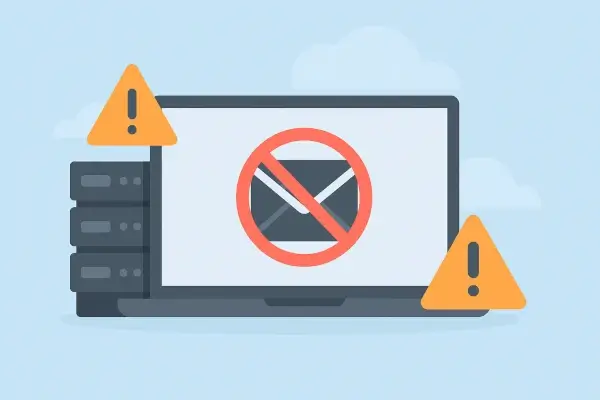
An email server gets blacklisted when it's identified as a potential source of spam, malware, or suspicious activity. Blacklists use automated systems and user reports to flag servers that violate mailing or security standards.
Once listed, legitimate messages may bounce, land in spam folders, or never reach recipients at all. Understanding why this happens is essential to prevent future listings and protect the sender's reputation.
Key Takeaways
- Email servers get blacklisted when they send spam-like or suspicious traffic.
- Poor list management, missing authentication, or weak security are top triggers.
- Shared IPs and user complaints increase blacklisting risk.
- Continuous email blacklist monitoring ensures early detection and fast recovery.
Table of Contents:
What Triggers an Email Server Blacklisting?
Can Poor Mailing Practices Lead to Blacklisting?
How Do Security Vulnerabilities Cause Blacklisting?
Does Shared Hosting Increase Blacklist Risk?
How Do User Complaints Influence Blacklist Decisions?
Can Email Volume or Frequency Trigger a Blacklisting?
Why Does a Blacklisted Server Affect Legitimate Senders?
How Can You Detect and React Quickly?
Conclusion
Related Guides
FAQ
What Triggers an Email Server Blacklisting?
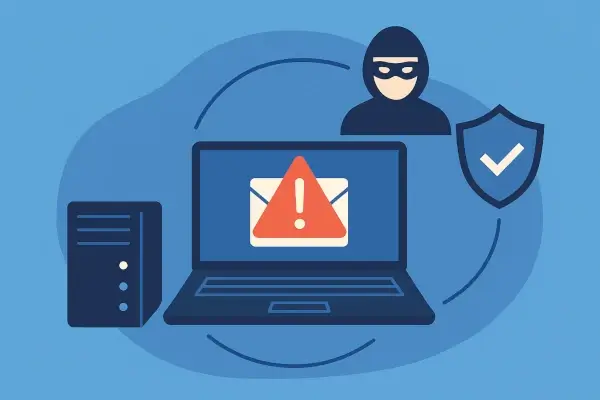
Email servers are blacklisted when their behavior resembles that of spammers or malicious senders. This decision is based on specific signals tracked by blacklist operators and spam filters. Triggers include sending high volumes of unsolicited messages, using unverified mailing lists, or showing poor authentication and security configurations.
Each blacklist uses its own algorithm, but most rely on measurable evidence, such as user complaints, bounce rates, or abnormal traffic patterns, to determine whether a server threatens inbox integrity. Even one compromised account or misconfigured relay can cause an entire IP range to be listed.
Can Poor Mailing Practices Lead to Blacklisting?
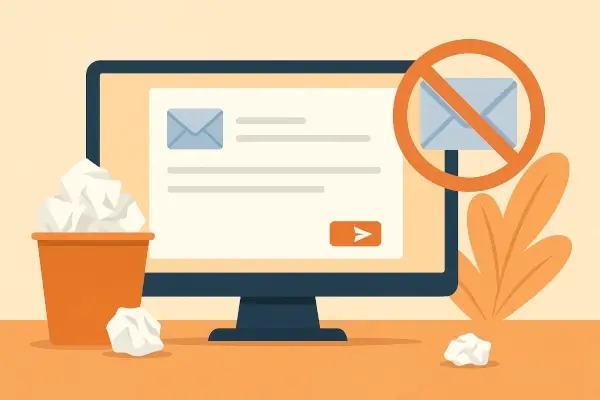
Yes. Poor mailing list management is one of the most common causes of blacklisting. When a sender repeatedly emails invalid, inactive, or purchased contacts, it generates hard bounces and spam complaints. These signals tell spam filters that the sender lacks proper consent or list hygiene.
Spam traps, addresses created solely to detect unsolicited mail, are another factor. If your server sends messages to these addresses, blacklist operators interpret it as spam activity. This often happens when old lists are reused or bought from third parties. Maintaining clean, permission-based lists is critical to avoid this type of detection.
How Do Security Vulnerabilities Cause Blacklisting?
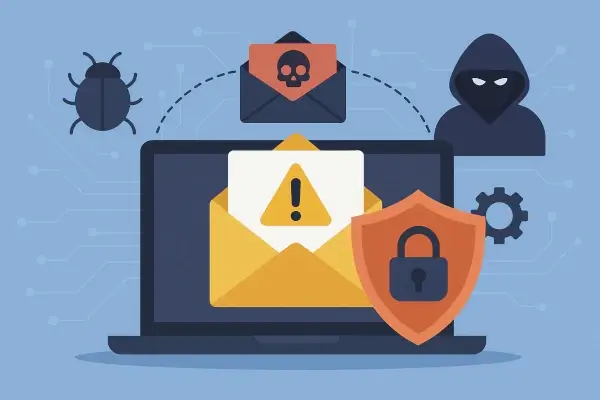
Email servers with weak or outdated security are easy targets for exploitation. Cybercriminals often use open relays, compromised credentials, or malware-infected systems to distribute spam or phishing campaigns. Once this activity is detected, the blacklist flags the server's IP to prevent further harm.
Even without direct hacking, misconfigured DNS or SMTP settings can mimic spam behavior. Missing authentication protocols, SPF, DKIM, and DMARC, make legitimate emails appear forged. In turn, mail providers treat these messages as unverified and risky, increasing the likelihood of blacklisting.
Does Shared Hosting Increase Blacklist Risk?
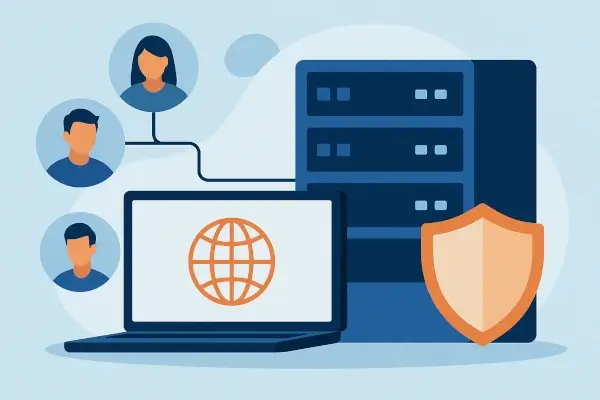
Yes. Shared hosting environments or cloud-based email platforms often route multiple domains through the same outbound IP address. If one domain on that shared IP engages in spam-like behavior, the blacklist operator may block the entire IP, affecting all senders on that server.
This issue is common with low-cost hosting or unmanaged VPS setups. While convenient, they offer little control over IP reputation. Businesses that rely on consistent deliverability should consider using a dedicated IP address or a monitored outbound relay to protect their reputation.
How Do User Complaints Influence Blacklist Decisions?
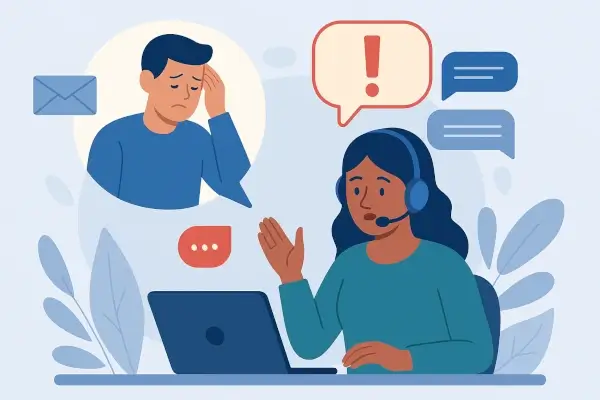
User feedback plays a significant role in blacklist algorithms. When recipients mark messages as spam, this data is shared with ISPs and reputation systems. A high complaint ratio, even if unintentional, signals that the sender's messages are unwanted or poorly targeted.
These reports accumulate quickly, especially in large campaigns or newsletters. Over time, consistent complaints can reduce sender trust, lower inbox placement rates, and trigger blacklist inclusion. Monitoring engagement metrics such as open rates, click-through rates, and complaint rates helps identify potential issues early.
Can Email Volume or Frequency Trigger a Blacklisting?

Sending too many emails within a short time frame can also trigger blacklisting. Sudden surges in outbound traffic are often interpreted as spam bursts, particularly when originating from new or untrusted IPs.
Gradual scaling of volume, known as IP warming, is essential for new servers. It helps build a positive reputation with ISPs by showing consistent, legitimate activity over time. Servers that skip this phase risk being flagged for suspicious output and added to blacklists quickly.
Why Does a Blacklisted Server Affect Legitimate Senders?

When a mail server's IP is listed, all senders using that server are affected, regardless of their individual practices. Legitimate businesses may experience bounced emails, blocked domains, and reputation loss. Clients may never receive critical information such as invoices, verification links, or security updates.
This collateral damage is what makes blacklisting so disruptive. It doesn't only punish the spammer, but it penalizes every sender sharing the same infrastructure. Continuous monitoring and timely detection are the only ways to reduce downtime and recover quickly.
How Can You Detect and React Quickly?
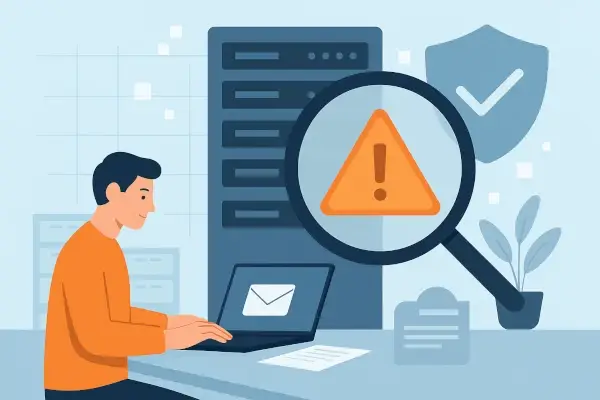
Most blacklists offer public lookup tools, but manual checks are inefficient. Automated monitoring systems perform constant DNSBL queries and send alerts when a listing occurs. This allows administrators to investigate causes before customers notice delivery failures.
Regular monitoring also reveals patterns, such as recurring listings tied to authentication issues or user behavior, helping businesses fix the root problem rather than the symptom. Tools like WebSitePulse's Blacklist Monitoring Service automate these checks and ensure immediate visibility across global DNS-based blacklists.
Start Blacklist Monitoring Your Emails Now!
Conclusion
Email servers are blacklisted when their sending behavior or security posture suggests spam-like activity. Issues such as poor list hygiene, open relays, shared IPs, or missing authentication protocols are the most common causes.
Maintaining secure configurations, responsible mailing practices, and real-time blacklist monitoring is essential to protect deliverability and preserve domain trust.
Related Guides
Explore other helpful resources in our Email Blacklist Monitoring series:
- What Is Email Blacklist Monitoring? — Learn how automated monitoring detects blacklisting issues early.
- What Is an Email Blacklist? — Understand how blacklists work and how they affect email deliverability.
- Why Email Blacklist Monitoring Matters - Explore the business impact of blacklisting and why proactive monitoring protects your reputation.
- How Email Blacklist Monitoring Works - See how automated detection systems identify listings and alert administrators.
Frequently Asked Questions (FAQ)
They're flagged for sending spam-like traffic, using poor mailing lists, or lacking proper authentication. Yes. Open relays, malware, or compromised credentials often lead to blacklisting. Yes. If one domain on a shared IP address sends spam, all domains on that IP address can be affected. Use automated blacklist monitoring tools that scan DNSBL databases for your IP or domain. Yes. Even trusted senders can get listed due to misconfigurations or IP reputation problems.What causes email servers to get blacklisted?
Can security issues trigger blacklisting?
Does one domain affect others on a shared hosting plan?
How can I check if my server is blacklisted?
Can legitimate businesses be blacklisted?


 Copyright 2000-2025, WebSitePulse. All rights reserved.
Copyright 2000-2025, WebSitePulse. All rights reserved.